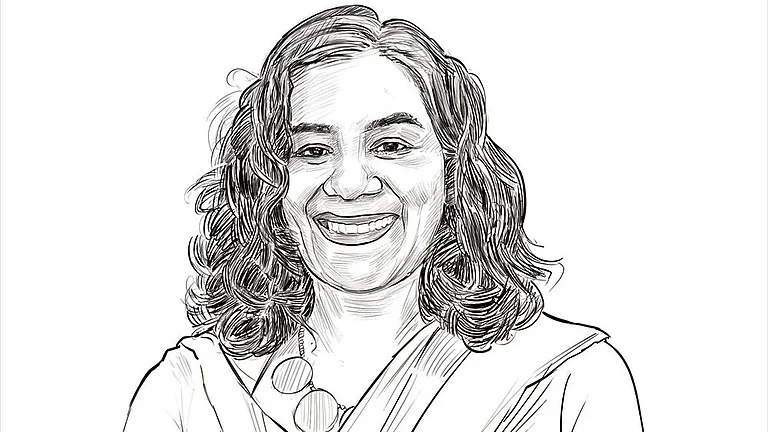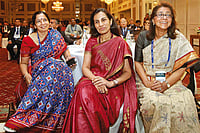Steve McCurry, Magnum photographer, is perhaps best known for his haunting 1985 image, ‘Afghan Girl’, which appeared on the cover of National Geographic. McCurry has perhaps taken more photographs in India than in any other country, including his native America. He has been visiting India for the past 35 years (“I think I’ve made 80 trips”) and India is his first book dedicated to the country. He had done an earlier book on the monsoons but this is far more ambitious, a reminder of just how vast and varied this country is, punctuated with so much colour and contrast. As he said during the book launch, “When extremes collide, it is visually arresting.” Yet it takes a special talent to capture that fleeting moment in time, the look on a face, the huddle of women in a storm, the contrast between light and shade that makes for an iconic photograph.
McCurry has earned international fame for covering the world’s hot spots as a news photographer—Afghanistan, the Iran-Iraq war, Lebanon, the Gulf War—but his true genius lies in walking the streets and bylanes to capture everyday images and transform them into art. This book covers the sacred and the profane, the bizarre and the brazen, the rich and the poor; proof of India’s diversity. As author William Dalrymple writes in the introduction to the book, “The odd yet witty juxtapositions McCurry captures so effortlessly are not quite surreal, and there are no impossibilities here...but the images are set in a world of almost make-believe and they have a strong element of the magical and the absurd.”
Magical as in the stunning shot of three friends in Srinagar’s Shalimar Gardens, absurd as in the photo of a tailor carrying his sewing machine on his shoulders through floodwater, and surreal as in the image of soldiers trudging through the snow in Gulmarg against the background of a church, a temple and a mosque. McCurry has travelled all across India by road and rail and captures the ancient and the modern with such creative passion that they often seem as one. Of its 96 photographs, over half are previously unseen and hand-picked from McCurry’s huge personal archive. His camera takes us on an epic journey from Gulmarg to the Thar, Varanasi to Vrindavan and Ladakh to Darjeeling, starkly contrasted with the usual metropolitan chaos and islands of tranquility. His forte seems to be faces—young, old, male, female, all telling a thousand stories. As he says, “Most of my images are grounded in people. I look for the unguarded moment, the essential soul peeking out, experience etched on a person’s face. I try to convey what it is like to be that person, a person caught in a broader landscape, that you could call the human condition.”
This is a collector’s edition, cloth-bound and printed on premium art paper. Phaidon, the British publisher, specialises in high-quality coffee-table books on the visual arts, architecture, photography, and design. Even seasoned Indian travellers will be amazed and delighted at this collection, featuring functioning step wells in Rajasthan, the vast crowds on pontoon bridges at the Kumbh Mela and bicycles draped across the side of a train in West Bengal to two sleeping mahouts being watched over by a giant elephant, and the festivals that capture the mood and madness of India. There is even one of M.F. Husain in his Mumbai studio in 1993 looking somewhat forlorn. The beauty of McCurry’s book is that every picture tells a story. Indeed, McCurry’s India is a collection of photographs that say more about this country than a library of books.


























